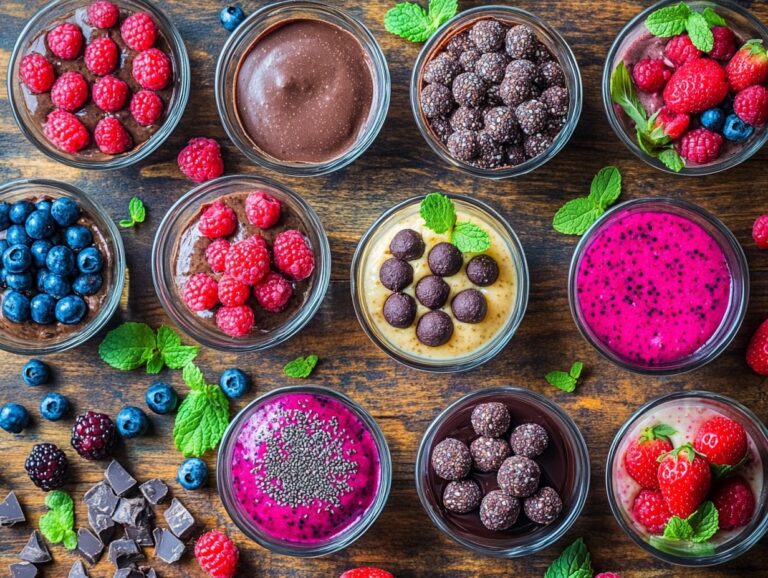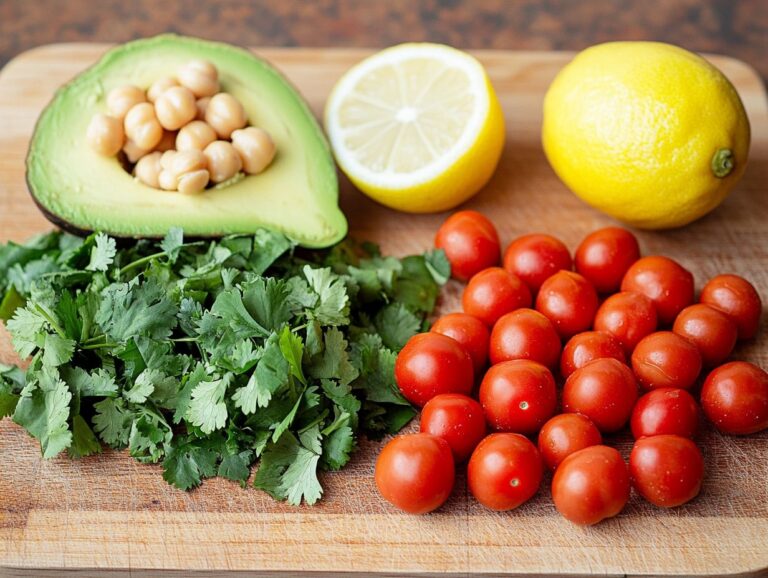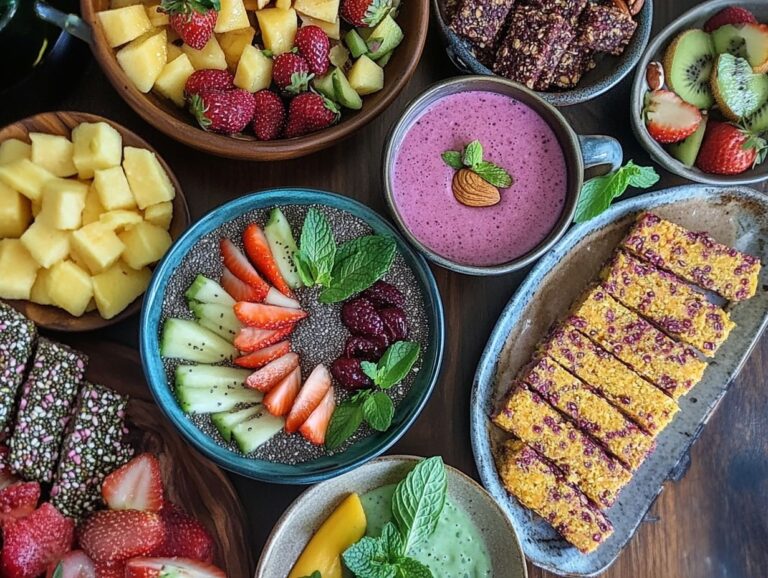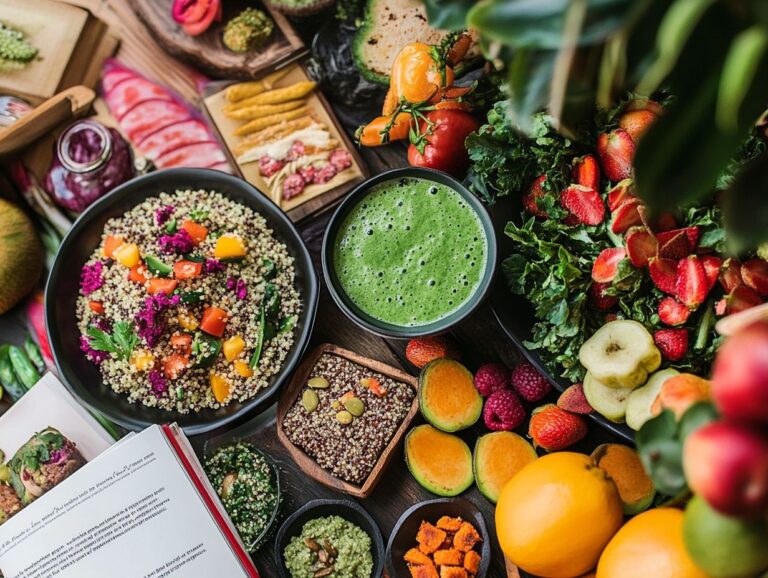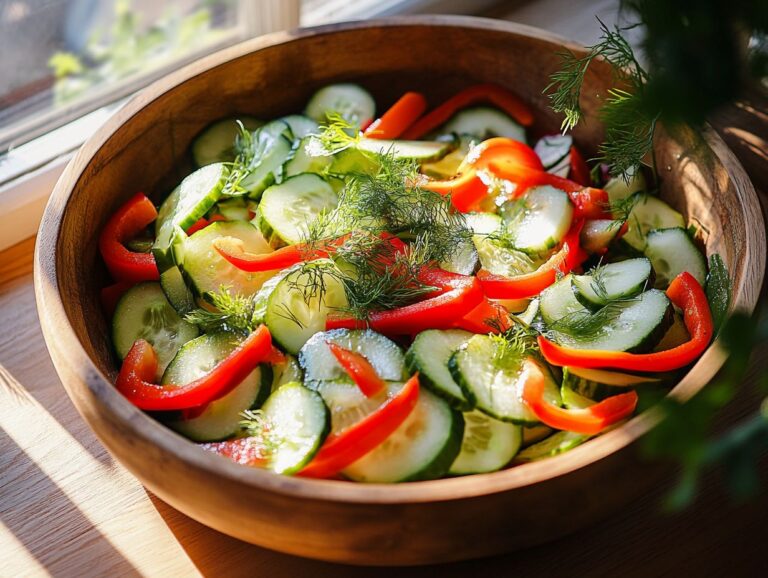British cuisine is renowned for its hearty comfort food, steeped in tradition and rich in flavor. But what if you want to enjoy these classic dishes while adhering to a vegan lifestyle? This article explores the elements that define a recipe as “classic” or “British” and offers delicious vegan substitutions for traditional British food ingredients. Classic British recipes include the full English breakfast, shepherd’s pie, Welsh rarebit, fish and chips, Cornish pasties, bangers and mash, cream tea, and scones. Additionally, the article provides helpful tips for making these recipes vegan-friendly. **The Best British Food Recipes in Vegan Form** 1. **Full English Breakfast (Vegan):** Traditional British breakfasts are hearty and filling, typically featuring sausages, bacon, eggs, baked beans, and toast. 2. **Shepherd’s Pie (Vegan):** This dish has British and Irish origins and traditionally includes lamb, with the term “shepherd” referring to those who tend sheep. Vegan shepherd’s pie consists of mashed potatoes and a variety of vegetables. 3. **Welsh Rarebit (Vegan):** A classic British dish, Welsh rarebit is a savory creation made with a rich cheese spread often enhanced with beer served on toast. 4. **Fish and Chips (Vegan):** The classic British fish and chips is famous for its crispy beer batter, which creates a delicious exterior for the moist, tender “fish” (in this case, a vegan alternative). 5. **Cornish Pasties (Vegan):** Cornish pasties are savory handheld pastries that are perfect for picnics or lunch. 6. **Bangers and Mash (Vegan):** This classic dish features vegan sausages served with creamy mashed potatoes and is often complemented by onion gravy. 7. **Cream Tea (Vegan):** Cream tea is a light meal that pairs tea with scones, cream, and jam, typically served in the late afternoon or early evening in Britain. 8. **Scones (Vegan):** Scones are light and fluffy baked goods commonly enjoyed during afternoon tea, and they can be made with a variety of flavors. By exploring these vegan adaptations, you can savor the comforting taste of traditional British cuisine while maintaining a plant-based lifestyle.
What Makes a Recipe “Classic” and “British”?
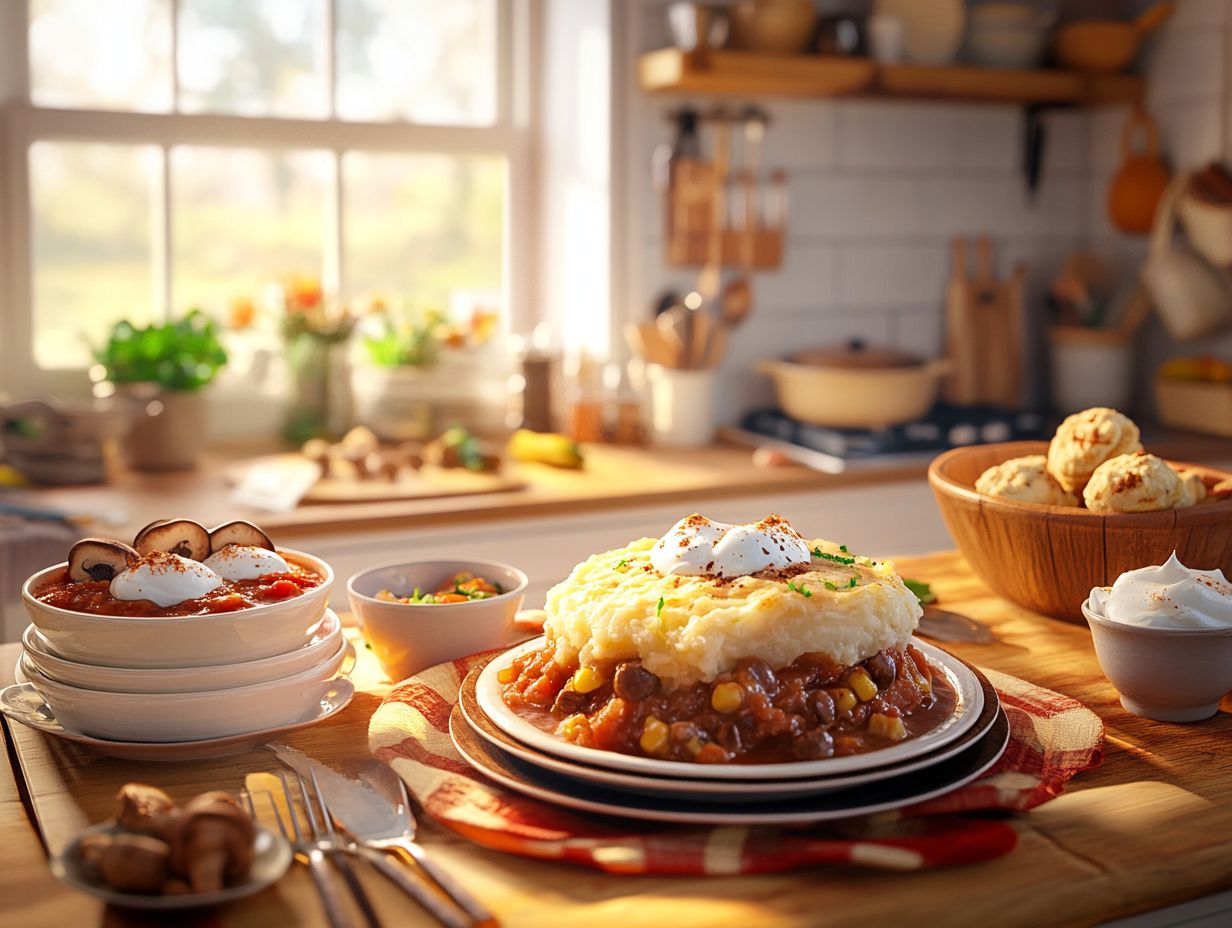 A classic British recipe is a dish deeply rooted in England’s rich culinary history, often reflective of a specific period or the regional climate and culture. These recipes range from the hearty stews and pies of medieval times to the comforting meals created during wartime rationing. They exemplify English home cooking and have endured through the ages, whether as cottage industry meals made in the countryside or in the larger kitchens of Victorian cities. The definition of what constitutes a ‘classic’ recipe is subjective and extends beyond just its ingredients. The communal enjoyment of these meals, many of which evoke memories of bygone eras, is what truly defines them as classics. Often, classic British recipes reflect their historical context. For example, the classic dish Toad in the Hole likely originated as a way to stretch meat rations during the 19th century, a time of significant economic hardship. Chicken Tikka Masala exemplifies the British enthusiasm for Indian cuisine, which flourished due to the influence of the British Empire. Iconic dishes such as Fish and Chips, Shepherd’s Pie, and Roast Beef highlight the regional ingredients and flavors available throughout history, including root vegetables, fresh meats, and fish. Not only are ingredients regional, but so are cooking methods and equipment, leading to unique regional classics. For example, Cornish pasties hailing from the southwest, Yorkshire pudding from the north, and Welsh leeks each have their distinct identities. Britain is renowned for its traditional cooking methods, including roasting, stewing, braising, baking, and simmering. These techniques impart flavors that lie at the heart of British national identity. Classic recipes benefit from the knowledge of these methods, which have been passed down through generations, whether it’s about slow-roasting a joint of lamb for Sunday lunch or baking a pie in a wood-fired oven. This not only preserves the authenticity of the dish but also fosters a deeper connection to British culture, reinforcing the idea that food is not just a source of nourishment but a cultural artifact.
A classic British recipe is a dish deeply rooted in England’s rich culinary history, often reflective of a specific period or the regional climate and culture. These recipes range from the hearty stews and pies of medieval times to the comforting meals created during wartime rationing. They exemplify English home cooking and have endured through the ages, whether as cottage industry meals made in the countryside or in the larger kitchens of Victorian cities. The definition of what constitutes a ‘classic’ recipe is subjective and extends beyond just its ingredients. The communal enjoyment of these meals, many of which evoke memories of bygone eras, is what truly defines them as classics. Often, classic British recipes reflect their historical context. For example, the classic dish Toad in the Hole likely originated as a way to stretch meat rations during the 19th century, a time of significant economic hardship. Chicken Tikka Masala exemplifies the British enthusiasm for Indian cuisine, which flourished due to the influence of the British Empire. Iconic dishes such as Fish and Chips, Shepherd’s Pie, and Roast Beef highlight the regional ingredients and flavors available throughout history, including root vegetables, fresh meats, and fish. Not only are ingredients regional, but so are cooking methods and equipment, leading to unique regional classics. For example, Cornish pasties hailing from the southwest, Yorkshire pudding from the north, and Welsh leeks each have their distinct identities. Britain is renowned for its traditional cooking methods, including roasting, stewing, braising, baking, and simmering. These techniques impart flavors that lie at the heart of British national identity. Classic recipes benefit from the knowledge of these methods, which have been passed down through generations, whether it’s about slow-roasting a joint of lamb for Sunday lunch or baking a pie in a wood-fired oven. This not only preserves the authenticity of the dish but also fosters a deeper connection to British culture, reinforcing the idea that food is not just a source of nourishment but a cultural artifact.
Vegan Alternatives for Traditional Ingredients
Vegan alternatives for traditional ingredients have transformed our approach to classic British recipes, enabling us to enjoy hearty meals without relying on animal products. By creatively substituting meat, dairy, and eggs with plant-based ingredients, it is possible to create vegan comfort food that captures the essence of beloved dishes. For instance, recipes like:
- Vegan Macaroni Cheese
- Vegan Roast Dinner
- Mushroom Wellington
highlight the versatility of vegan cooking while preserving the rich flavors characteristic of traditional British meals.
Substituting for Meat, Dairy, and Eggs
Substituting meat, dairy, and eggs in traditional British recipes is essential for creating delicious vegan English dishes that align with a plant-based lifestyle. By employing innovative techniques, we can replicate the textures and flavors of classic dishes like Vegan Toad in the Hole or Vegan Fish Pie while ensuring they remain cruelty-free. Simple yet effective substitutes, such as lentils for meat and nut milks for dairy, can be used to craft baked fruit cakes and other delightful desserts that honor our culinary heritage without compromising our dietary preferences. This transformation opens up a world of culinary possibilities, where ingredients like chickpeas, cauliflower, and tempeh take center stage. For example, the beloved Shepherd’s Pie can be reinvented with a hearty filling of spiced lentils and creamy mashed potatoes made with cashew nuts or soy milk. Traditional favorites, such as Yorkshire pudding, can also be made using chickpea flour, preserving the fluffy texture that complements a comforting vegan Sunday roast. Even classic desserts, like sticky toffee pudding, can be adapted with dairy-free alternatives and flaxseed eggs, allowing for indulgent flavors without ethical concerns.
Traditional British Breakfast Recipes
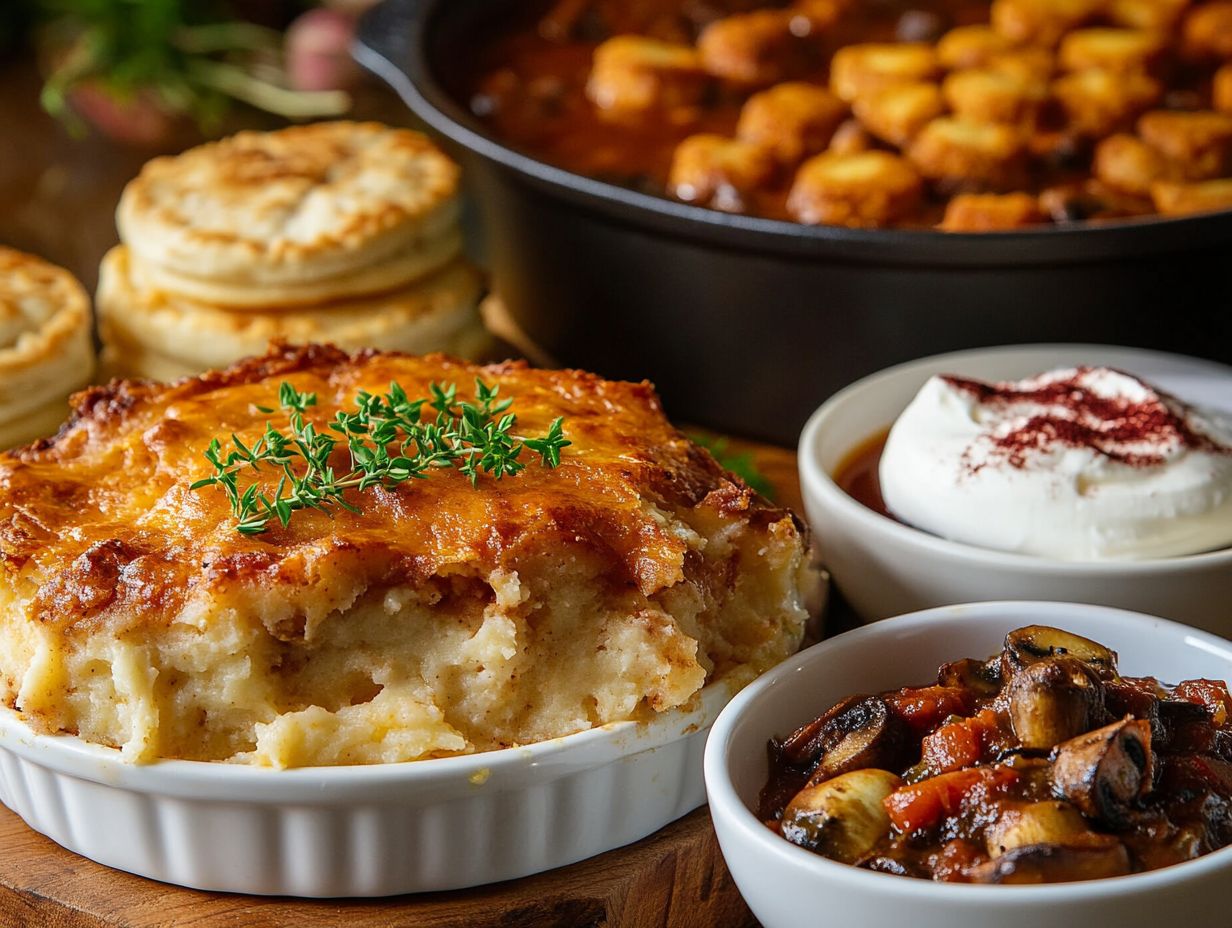 Traditional British breakfast recipes play a vital role in English home cooking, celebrated for their hearty and filling nature. The full English breakfast, which includes beloved staples such as sausages, beans, toast, and eggs, is a classic and substantial way to kickstart the day. However, beyond the full English breakfast, there are other equally delicious options like crumpets and porridge topped with fruit compote, highlighting the diverse flavors and textures found in British cuisine. These meals often bring comfort and evoke cherished memories for those who enjoy them.
Traditional British breakfast recipes play a vital role in English home cooking, celebrated for their hearty and filling nature. The full English breakfast, which includes beloved staples such as sausages, beans, toast, and eggs, is a classic and substantial way to kickstart the day. However, beyond the full English breakfast, there are other equally delicious options like crumpets and porridge topped with fruit compote, highlighting the diverse flavors and textures found in British cuisine. These meals often bring comfort and evoke cherished memories for those who enjoy them.
Full English Breakfast
The full English breakfast is an iconic meal that epitomizes traditional British cuisine and showcases the heartiness of English cooking. Typically served with a variety of ingredients, such as sausages, bacon, eggs, baked beans, and tomatoes, this breakfast is renowned for its generous portions and satisfying flavors. Beyond its deliciousness, the full English breakfast serves as an opportunity for gathering with family and friends, making it a cherished cultural tradition in British society. Often accompanied by toast or fried bread and sometimes featuring mushrooms or black pudding, the breakfast can vary significantly from region to region across the UK, reflecting local tastes and ingredients. For example, a Scottish variation may include haggis, while Welsh breakfasts might feature laverbread. The preparation methods can range from frying to grilling, ensuring a delightful crunch and rich texture. Given its cultural significance, the full English breakfast is frequently served in cafes and pubs, symbolizing not just a meal, but a social experience. Even for vegans, there are creative adaptations using plant-based sausages, scrambled tofu, and grilled vegetables, allowing everyone to enjoy this beloved morning feast.
Porridge with Fruit Compote
Porridge with fruit compote is a comforting and nutritious dish that is a staple of traditional British breakfasts, providing a warm and hearty start to the day. This dish typically consists of oats cooked in water or plant-based milk, topped with a sweet fruit compote that varies with the seasons. Not only does it offer a delightful balance of textures and flavors, but it also embodies the essence of vegan English recipes, making it suitable for those seeking healthy, plant-based alternatives. The beauty of porridge lies in its versatility; you can easily adjust the consistency by adding more liquid or simmering it for a longer period. For a chewier texture, start with whole rolled oats, or opt for quick-cooking oats for a creamier finish. As for the fruit compote, it can be made using fresh seasonal fruits such as berries in the summer, apples and pears in the autumn, or citrus fruits in the winter. A simple method involves simmering your chosen fruits with a splash of water and a sprinkle of sweetener, allowing them to break down into a luscious sauce. To elevate the dish even further, consider sprinkling on nuts, seeds, or a spoonful of nut butter. These additions not only enhance the flavor but also provide protein and healthy fats, making this breakfast not only delicious but also deeply satisfying.
Hearty Vegan Lunch and Dinner Recipes
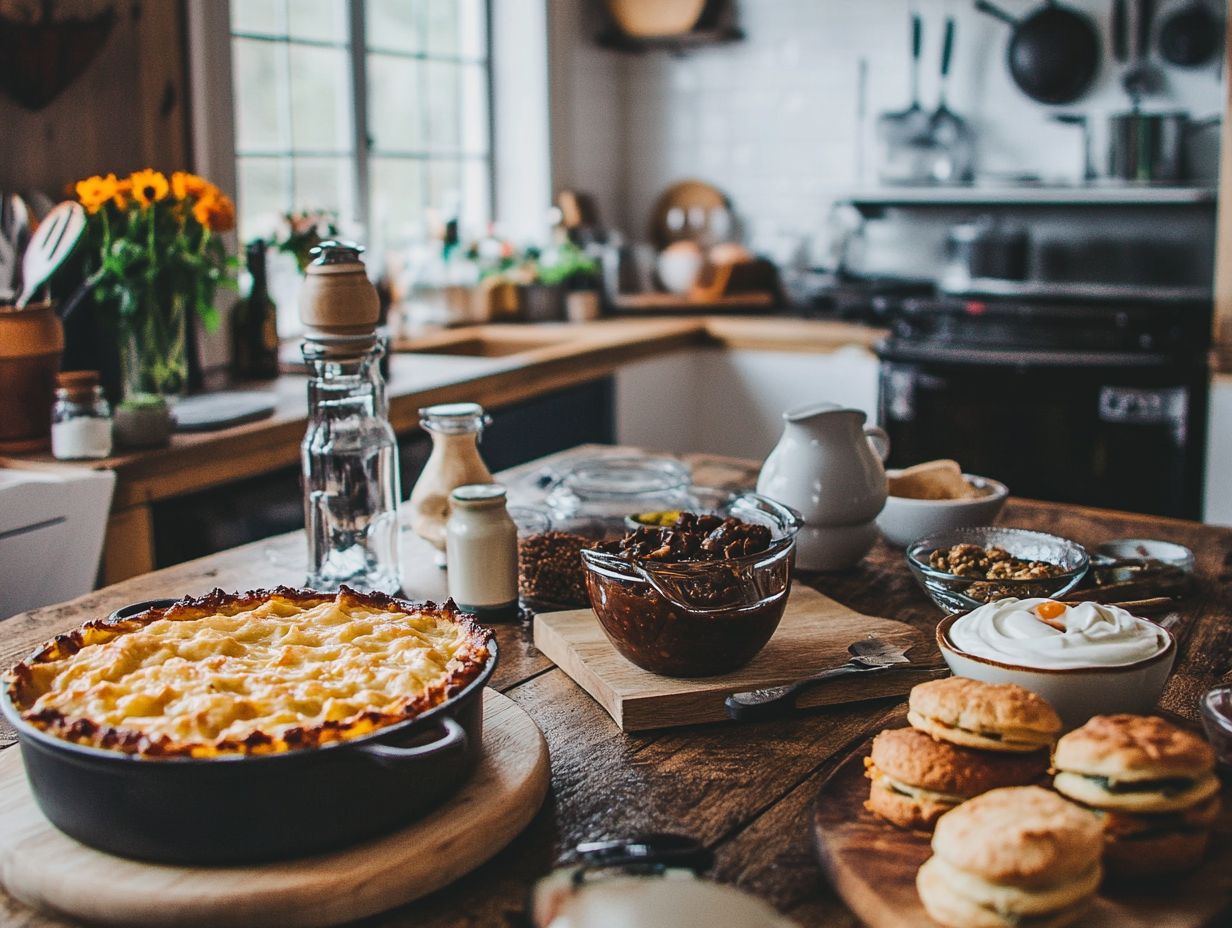 Hearty vegan lunch and dinner recipes are rich in flavor and nutrition, making them essential for those who follow plant-based diets. These dishes often feature herb and spice-laden, veggie-packed stews, such as Vegetable and Dumpling Stew, as well as rustic pies that embody vegan comfort food. Some vegan English recipes also include baked fruit cakes and Old-Fashioned Golden Vegetable Soup. The versatility of vegan comfort food invites experimentation in the kitchen while still honoring the traditional principles of British home cooking. This ensures that everyone can discover hearty meals they truly enjoy. Additionally, exploring traditional British recipes allows for a deeper appreciation of English home-cooking.
Hearty vegan lunch and dinner recipes are rich in flavor and nutrition, making them essential for those who follow plant-based diets. These dishes often feature herb and spice-laden, veggie-packed stews, such as Vegetable and Dumpling Stew, as well as rustic pies that embody vegan comfort food. Some vegan English recipes also include baked fruit cakes and Old-Fashioned Golden Vegetable Soup. The versatility of vegan comfort food invites experimentation in the kitchen while still honoring the traditional principles of British home cooking. This ensures that everyone can discover hearty meals they truly enjoy. Additionally, exploring traditional British recipes allows for a deeper appreciation of English home-cooking.
Vegan Shepherd’s Pie
Vegan Shepherd’s Pie is a delightful variation of the traditional British recipe for Shepherd’s Pie, which is one of the most beloved comfort foods in Britain. In this dish, meat is replaced by lentils or mushrooms, and it is topped with creamy mashed potatoes before being baked to perfection. The dish is often part of vegan English recipes that cater to those who prefer plant-based ingredients. Vegan Shepherd’s Pie retains the original dish’s rich flavor while offering a nutritious and hearty meal for those following a vegan diet. Traditional Shepherd’s Pie is known for its heartiness and is often prepared in large batches to feed families during the cold winter months. This dish evokes the cozy atmosphere of cozy countryside cottages and Victorian eras. To make Vegan Shepherd’s Pie, you start by cooking diced onions, carrots, and celery to create a flavorful broth base. Then, you can add your choice of beans and vegetables. Pour in vegetable broth along with your favorite spices, and allow the mixture to simmer together. This method aligns perfectly with medieval inspired recipes that focus on hearty and nutritious meals. Once the filling is ready, layer it in your baking dish and generously top it with creamy mashed potatoes. Bake at 200 C (400 F) for 25-30 minutes, and you’ll have a meal that evokes the cozy atmosphere of a British pub or even Tolkiens Shire. Like most comfort foods, Vegan Shepherd’s Pie is perfect for sharing and can be enjoyed as a main dish for dinner parties, as part of family meal prep, or on a chilly weeknight. This dish is reminiscent of Old-School Dinners that bring back nostalgic memories.
Bangers and Mash
Vegan Bangers and Mash is a plant-based version of the classic British comfort food, featuring flavorful sausages served over creamy mashed potatoes, often accompanied by rich onion gravy. This recipe typically includes plant-based bangers (sausages), mashed potatoes, and onion gravy. By utilizing plant-based alternatives to traditional ingredients, Vegan Bangers and Mash successfully replicates the flavors and textures of traditional British cuisine. This dish is an excellent example of how vegan comfort food can honor the essence of traditional British recipes. The recipe begins with the selection of high-quality vegan sausages, which can be made from lentils, beans, or purchased from commercial brands. The flavor and texture of the sausage are essential, so choosing a variety with robust seasoning is recommended. Some popular options include Quorn vegan sausages, which provide excellent taste and texture. The creamy consistency of the mashed potatoes can be achieved by adding plant-based milk and vegan butter. For the onion gravy, onions are saut ed until browned and then combined with vegetable broth and soy sauce to create a delicious umami-rich sauce. Vegan Bangers and Mash is not only a satisfying meal but also embodies the spirit of British culinary culture, offering comfort and tradition while catering to a vegan diet. For an extra twist, roasted garlic or fresh herbs can be added for additional flavor.
Sweet Treats for Afternoon Tea
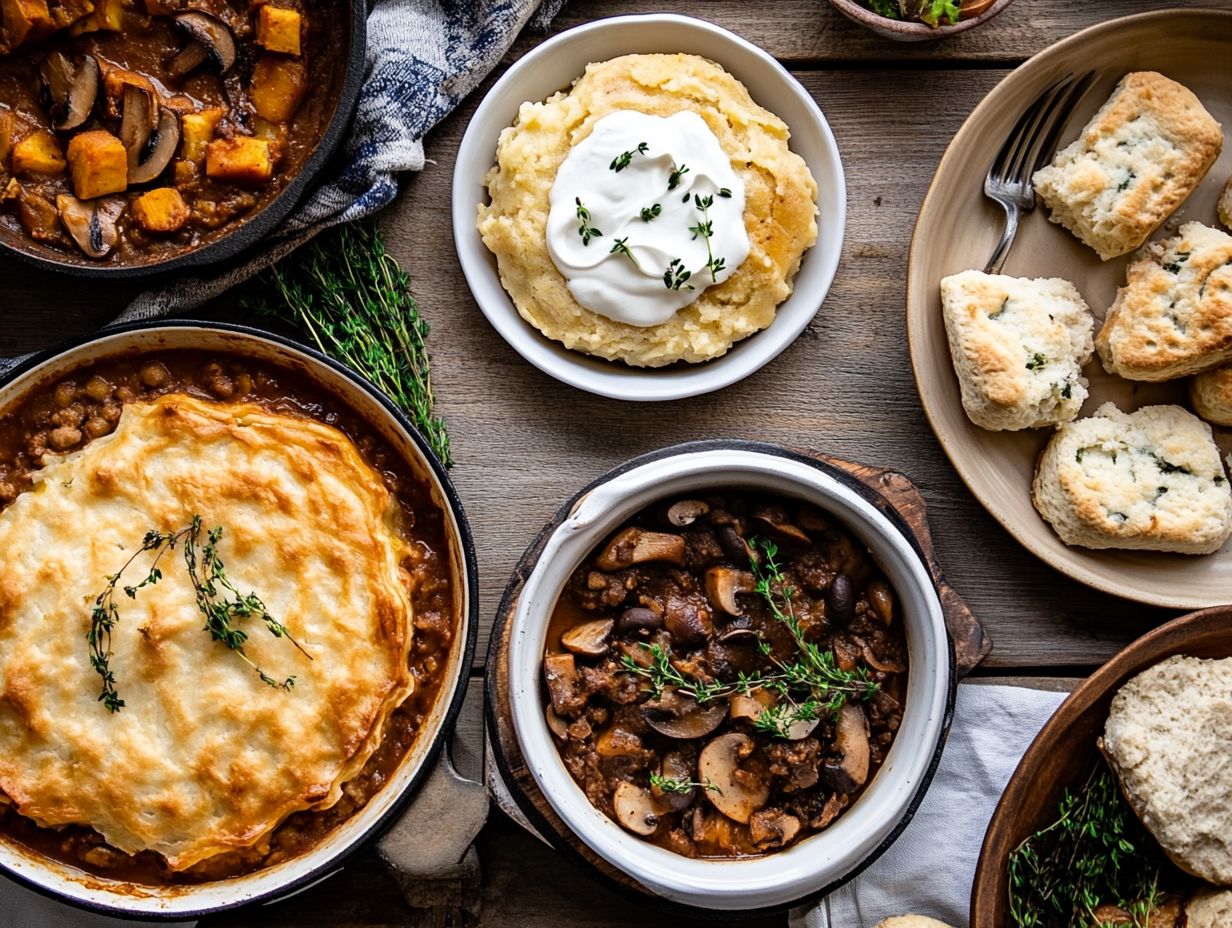 Sweet treats for Afternoon Tea hold a significant place in British culture, providing a classic way to savor delicious baked goods in the company of friends and family. Alongside vegan desserts, traditional British desserts such as Old-Fashioned Seed Cake and Bakewell Tart are often enjoyed. The sweets typically served at Afternoon Tea include the traditional scone, accompanied by jam and cream, alongside iconic desserts like Victoria Sponge Cake. These treats are considered some of the lighter options among traditional British desserts, making them perfect for a delightful afternoon tea experience.
Sweet treats for Afternoon Tea hold a significant place in British culture, providing a classic way to savor delicious baked goods in the company of friends and family. Alongside vegan desserts, traditional British desserts such as Old-Fashioned Seed Cake and Bakewell Tart are often enjoyed. The sweets typically served at Afternoon Tea include the traditional scone, accompanied by jam and cream, alongside iconic desserts like Victoria Sponge Cake. These treats are considered some of the lighter options among traditional British desserts, making them perfect for a delightful afternoon tea experience.
Scones with Jam and Cream
Scones with jam and cream are a staple of Afternoon Tea and are among the best-known traditional British desserts. These baked goods are soft and buttery, typically served warm, and accompanied by sweet raspberry or strawberry jam and clotted cream. For a twist, crumpets or Vegan Gingerbread Cake can also be delightful additions to your tea spread. The ritual of enjoying scones during Afternoon Tea has gained popularity, bringing people together to savor the moment. A perfect scone is light and flaky, a result achieved by gently mixing the dough and avoiding overworking it, as overworking can lead to dense scones. Using cold ingredients such as butter and milk also contributes to the desired texture. Experimenting with additions like dried fruits, chocolate chips, or herbs can create unique flavors for each batch. For a historical twist, consider incorporating elements from wartime era recipes or even crafting a Hobbit house-inspired tea party. Whether enjoyed plain or with a twist, these delightful treats embody the spirit of British hospitality, encouraging genuine conversations over cups of tea. Scones are more than just food; they symbolize warmth and togetherness, making every Afternoon Tea gathering a memorable experience.
Victoria Sponge Cake
Victoria Sponge Cake is a delightful dessert that embodies the elegance of traditional British confections and is a staple of Afternoon Tea. Named after Queen Victoria, this cake features layers of light sponge filled with jam and whipped cream, creating a perfect balance of sweetness and texture. This classic has graced many a Victorian city and continues to be cherished today. While it is a beloved addition to tea gatherings, its simplicity and charm have made it a favorite among dessert lovers everywhere. Known for its versatility, Victoria Sponge Cake is often served at celebrations such as birthdays and weddings. Another versatile dessert option for these occasions is the Vegan Fish Pie, which offers a savory alternative. The cake should have a moist, tender crumb, achieved through the right combination of flour, butter, sugar, and eggs. Common variations of the Victoria Sponge include different types of jam, with strawberry and raspberry being the most popular; however, one can also experiment by adding fresh berries or lemon zest to the batter. For a unique twist, consider using Hedgerow Juice to add a burst of flavor. The cake is typically adorned with a light dusting of icing sugar or a simple glaze, making it both a delicious and visually appealing dessert. For a festive touch, consider serving it on special occasions like St Georges Day. For more inspiration on traditional British recipes and vegan adaptations, consider exploring videos on traditional English breakfasts, Vegan Macaroni Cheese, Vegan Roast Dinner, Mushroom Wellington, Vegan Yorkshire Puddings, and Vegan Toad in the Hole.
